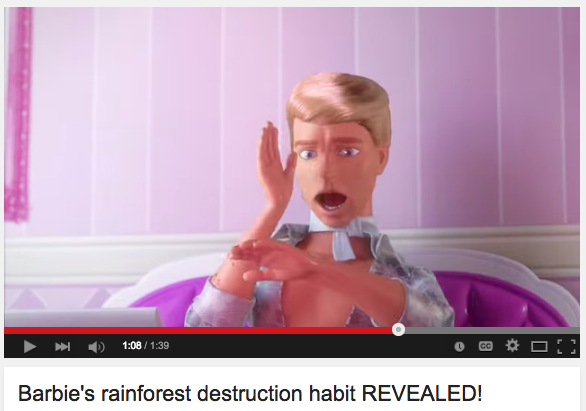Greenpeace has done it again.
Great content is fundamental to digital campaign success.
If you have a story that people want to share, the internet offers an almost infinite distribution channel.
Greenpeace has created compelling content and used the media and their international support base to spread its message across the world.
LEGO partnership with Shell
Because of this exceptionally beautiful and emotive content campaign, Greenpeace have secured a promise from LEGO that they will not renew their contract with oil giant Shell (worth 68 million pounds).
If you haven’t seen the campaign or don’t know the background, LEGO had partnered with Shell to create Shell branded LEGO sets sold in Shell service stations in 26 countries. Greenpeace has taken aim at Shell because of their plans to drill for oil in the Arctic – and this is how they engage in corporate communications.
The Strategy
Greenpeace have had great success achieving environmental goals by mobilising consumers to send a message to the brands they love. Greenpeace provides the content and message and asks like-minded people to share their message and demand ethical action from corporations like LEGO.
Ken dumps Barbie
In 2012 Greenpeace elicited an announcement from Mattel confirming that they will source sustainable paper products for their Barbie packaging. This is my favourite campaign, where Ken is shocked to find how Barbie makes her money.
Take a break. Have a KitKat
In 2010 Greenpeace won a promise from Nestle to use only 100% sustainable palm oil in their food products, including the popular KitKat.
Getting results from your digital campaign
Obviously not every organisation has an irreverent brand with the activist values, bravery and freedom to take on corporate giants like Greenpeace can and does. Greenpeace uses people power and public perception to pressure brands they consider unethical into changing their practices and supply chains. Obviously the last 5 years of campaigns (shown above) demonstrate that digital plays a key role in getting the message to the people but their success is largely due to the coordination of multiple media channels – including direct mail, media and telephone marketing.
Ultimately, the LEGO Everything is NOT awesome campaign has been overwhelmingly successful.
- The Everything is NOT awesome video is Greenpeace’s most viral (shared) video ever
- Over 1 million people sent emails to Shell demanding they cut ties (over a 3 month period)
- Lego have announced that they will not renew their contract with Shell, worth 68 million pounds.

